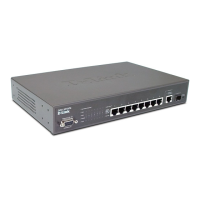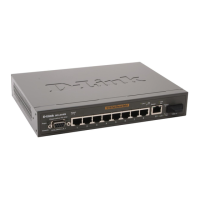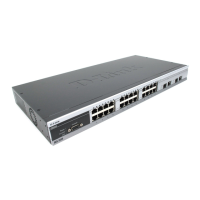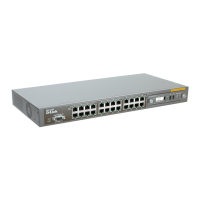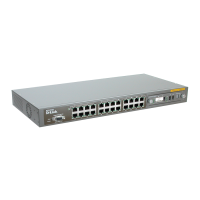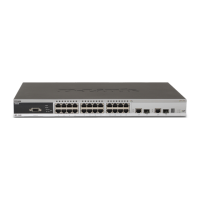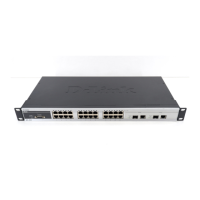Appendix E
ARP Packet Content ACL
Address Resolution Protocol (ARP) is the standard method for finding a host's hardware address (MAC address) when only its IP
address is known. This protocol is vulnerable so hackers can spoof the IP and MAC information in the ARP packets to attack a
LAN (known as ARP spoofing). This document is intended to introduce ARP protocol, ARP spoofing attacks, and the
countermeasure devised by D-Link to put an end to ARP spoofing attacks.
How Address Resolution Protocol works
In the process of ARP, PC A will, firstly, issue an ARP request to query PC B’s MAC address. The network structure is shown in
Figure-1.
Figure - 1
In the mean time, PC A’s MAC address will be written into the “Sender H/W Address” and its IP address will be written into the
“Sender Protocol Address” in ARP payload. As PC B’s MAC address is unknown, the “Target H/W Address” will be “00-00-00-
00-00-00” while PC B’s IP address will be written into the “Target Protocol Address”, shown in Table-1.
H/W
type
Protocol
type
H/W
address
length
Protocol
address
length
Operation
ARP request
Sender
H/W address
00-20-5C-01-11-11
Sender
protocol
address
10.10.10.1
Target
H/W address
00-00-00-00-00-00
Target
protocol
address
10.10.10.2
Table - 1 (ARP Payload)
The ARP request will be encapsulated into the Ethernet frame and sent out. As can be seen in Table-2, the “Source Address” in
the Ethernet frame will be PC A’s MAC address. Since the ARP request is sent via a broadcast method, the “Destination address”
is in the format of Ethernet broadcast (FF-FF-FF-FF-FF-FF).
Destination
address
FF-FF-FF-FF-FF-FF
Source address
00-20-5C-01-11-11
Ether-type ARP FCS
Table - 2 (Ethernet frame format)
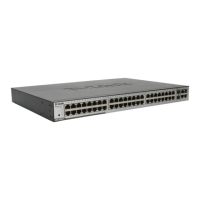
